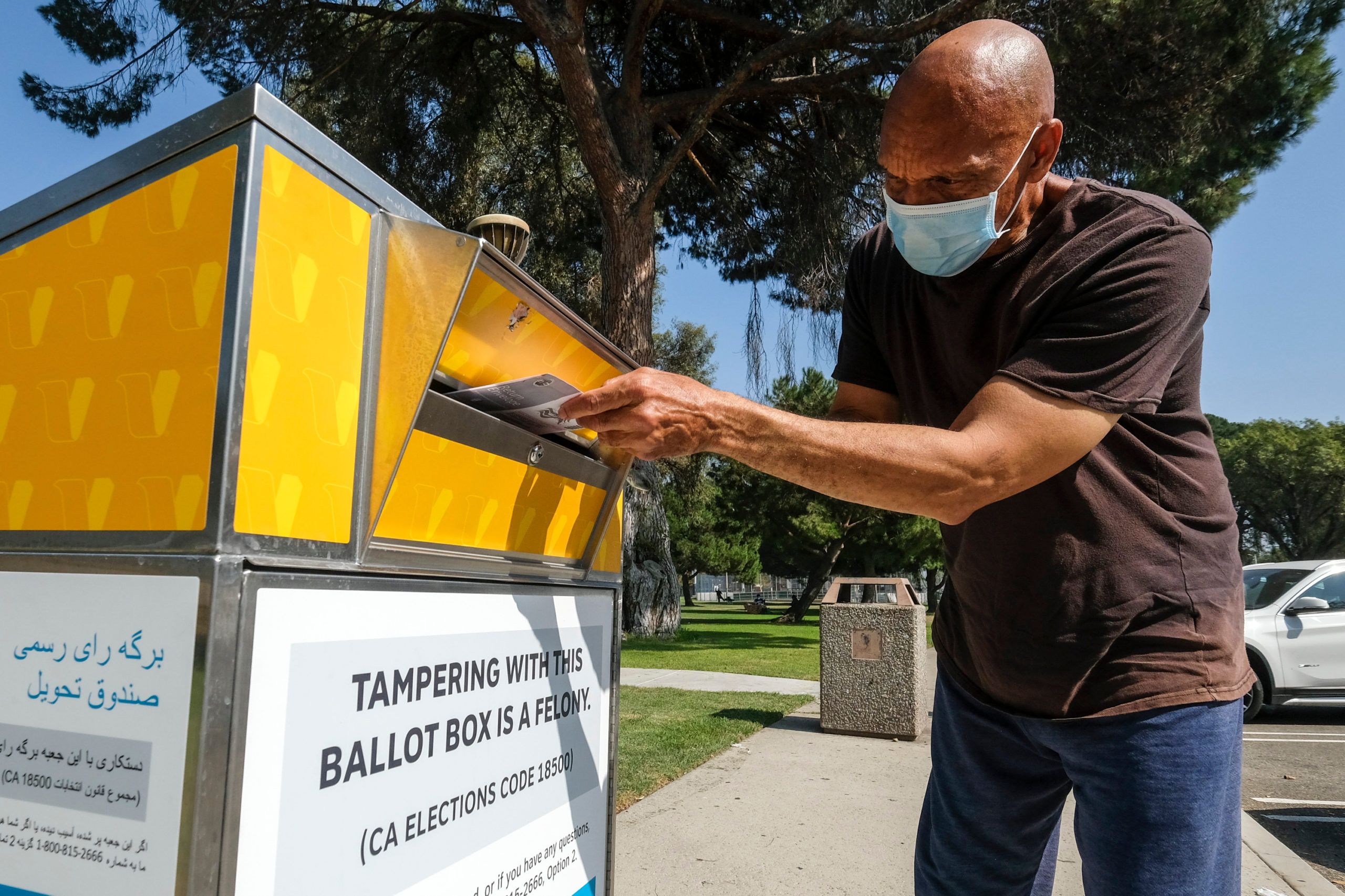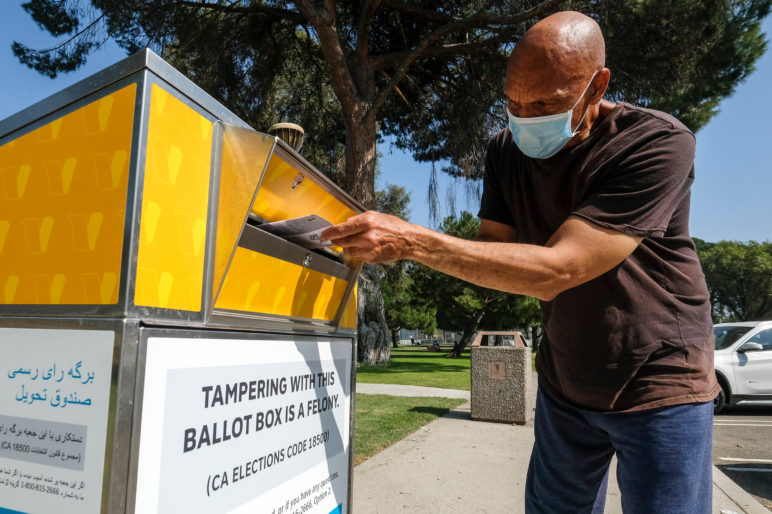Sightline has provided detailed reports for every state with recommendations to prepare for a surge in mail-in ballots this November and beyond. While some states made significant strides to their voting systems to make mail-in ballots more accessible for the general election, others have resisted changes.
Many more voters are choosing to vote absentee this year to avoid risk of COVID-19, but election officials have not received sufficient funds to accommodate the new needs of voting in a pandemic. So we can expect some local clerks to struggle with counting ballots. Counting every vote is especially important in battleground states, where a small number of votes could swing an entire group of Electoral votes to one candidate—and even determine an election.
There are two main sticking points that could lead to legitimate absentee votes not getting counted. First, voters may not have a chance to fix problems with their signature. And second, their votes may not count if the elections office received their ballot after Election Day, even if they submitted it on time.
Maine, Nebraska, New Hampshire and Pennsylvania don’t require notice to voters if ballots are rejected
Most states require voters to sign their absentee ballot return envelope and check their signature against another one on file to verify the voters’ identity. If the signature doesn’t match, or the voter signs in the wrong place, officials reject the ballot. Some states give voters a chance to fix the problem. The majority of states don’t. They reject the ballot and don’t notify the voter, so the voter thinks their vote was counted but it wasn’t.
Maine, which received a D- grade for its vote-by-mail infrastructure, doesn’t have any law in place that requires voters to be notified when there’s a problem with their signature on the ballot. Maine officials advised local clerks to make a “good faith effort” to contact voters of signature problems as quickly as possible if their ballots are received by Election Day, but fell short of requiring clerks to contact voters. North Carolina officials in September also announced a change in its curing process that makes it easier for voters to correct mistakes with their ballots. But the Trump campaign is currently challenging it in court.
Several other battleground states usually do not notify voters of problems with their ballot: Kentucky (F), Nebraska (B-), New Hampshire (F), New Mexico (B), North Carolina (F), Pennsylvania (C-), and Virginia (D). Five of those, Kentucky, North Carolina, Pennsylvania, New Mexico, and Virginia, made some exceptions only for this November election. New Mexico and Virginia lawmakers passed temporary laws that require clerks to notify voters that their mail-in ballots were rejected and allow voters to cure missing or mismatched signatures before Election Day. Pennsylvania’s Department of State announced a new curing process in September that settled a lawsuit with the League of Women Voters, but its efforts became fruitless when the state Supreme Court court ruled that mail-in ballots are automatically void if they exclude a second “secrecy” envelope—known as a “naked ballot.” The rule confused enough voters during the 2019 general election to have election officials reject about 6 percent of mail-in ballots.
States still risk disenfranchising a mass number of voters even with these changes. If half of voters cast mail-in ballots in the four battleground states that don’t guarantee a curing process—assuming a similar turnout as the 2016 election—and each of those states rejects ballots for signature problems at the same rate that they did in 2018, a total of more than half a million votes across Pennsylvania, Maine, New Hampshire, and Nebraska would not be counted. That could be enough to decide the outcome in a close election.
Arizona, Georgia, and Minnesota don’t provide time after Election Day to cure signatures
Arizona, which received a B grade, already implements many of Sightline’s recommendations for safe and secure vote-by-mail infrastructure. Georgia, another state with a B grade, stood out among non-Western states in its vote-by-mail access. And Minnesota, which got a C- grade, made major strides to make absentee ballots accessible statewide. Most notably, Minnesota eliminated its requirement for voters to get a witness for ballot signatures.
But these battleground states could still do more to make sure every vote counts. All three fail to provide voters with enough time to cure problems with signatures on the ballot, leaving the risk of disenfranchisement for many qualified voters.
A signature problem could happen for a variety of reasons. Maybe the voter forgot to sign the envelope. Maybe they signed in the wrong place or accidentally switched envelopes with their spouse, or maybe their signature simply changed over time. States with the best practices—such as Oregon, Washington, and Colorado—give voters between 8 and 21 days after Election Day to correct their signatures so their votes can still be counted.
This recommendation makes it on the list of top priorities for almost all battleground states, with the exception of Nevada (A-) and Ohio (C+). But in Arizona, Georgia and Minnesota, states with strong vote-by-mail systems, the signature curing process would be the first priority for them to ramp up their commitment to counting every vote.
Florida, Michigan, Ohio, Maine, Montana, Nebraska, New Hampshire, and New Mexico don’t count ballots postmarked by Election Day and received within a certain number of days
Delays in the US Postal Service could mean that votes that were in the mail before Election Day don’t arrive until after. To ensure that legitimate votes are counted, many states have a policy of accepting ballots postmarked by Election Day and received within some number of days. But eight battleground states don’t count any votes received after Election Day, risking disenfranchising some voters.
Florida ranks better than many of its southern counterparts, having earned a B- grade for its vote-by-mail infrastructure. But unlike other states that have made last-minute adjustments on their postmark rule, Florida will still not accept any ballots received after Election Day. That puts tens of thousands of votes at risk of not getting counted if there is high turnout and a similar proportion of voters cast mail-in ballots as in the 2020 primary.
In Florida, not accepting postmarked ballots could cause many voters to be disenfranchised.
To give more voters the option to submit their ballot by Election Day and be sure it will be counted, regardless of the speed of the US Postal Service, Sightline recommends that states provide ballot drop boxes. Voters can deliver their ballot to a secure box, and as long as they got it in by the time polls close, it will be counted.
Fortunately, battleground states Michigan and Wisconsin have added drop boxes this year.
Unfortunately, Ohio’s secretary of state refused to allow local election officials to provide more than one drop box in each county, forcing voters to risk their vote not getting counted if they don’t get in the post with sufficient lead time. Ohio is also the only battleground state that requires voters to have a ballot postmarked before Election Day. While the state allows up to 10 days to count mail-in ballots, imposing an earlier postmark than what’s typically required in other states could lead to more voter disenfranchisement and confusion on November 3.
Texas accepts ballots postmarked by Election Day and received within 5 days. Governor Greg Abbott, ostensibly to increase election security, restricted the number of drop boxes to one per county, a move upheld by a federal appeals court. Especially in larger counties such as Harris, with nearly 5 million residents, a single drop box is not sufficient to give voters the option to submit their ballot on Election Day and be sure it will be counted.
If half of voters vote by mail in these 8 states and each state rejects ballots for missing a deadline at the same rate they did in 2018, more than 7.5 million votes across Florida, Michigan, Ohio, Maine, Montana, Nebraska, New Hampshire, and New Mexico would not be counted. That would be more than enough to tip the election.
Pennsylvania, which received a C- grade, ran into a problem with its deadlines. The turnaround time was so tight, the vast majority of rejected absentee ballots in the 2018 midterms—94 percent—weren’t counted because they missed a deadline. State law restricted local clerks from counting ballots received after Election Day, even if they were postmarked and turned in on time.
A state court ruled last month that Pennsylvania must count ballots with a postmark received three days after Election Day. But Republicans have challenged the ruling in the US Supreme Court, asking justices to halt the lower court’s order. Without the extension, the state could face major problems with deadlines this November if turnout remains high and the state sees similar far higher absentee ballot rejection rates than in the past—and could risk disenfranchising more than 120,000 voters in the general election.
Michigan needs time to process ballots
Michigan voting rights advocates scored a big win last month when a state judge ruled that local clerks must count ballots received up to two weeks after Election Day, so long as they’re postmarked by November 2. Court of Claims Judge Cynthia Stephens said the previous 8 PM deadline on Election Day to receive the ballots was an “impossible restriction” for absentee ballots. She quoted the US Office of Inspector General, which said Michigan was a state where voters were at a high risk of disenfranchisement.
But the legal fight is not yet over. Two former Republican secretaries of state sued current Secretary of State Jocelyn Benson over the new extended postmark timeline in federal court. While Michigan received a B grade for its vote-by-mail preparedness, the state has been behind when it comes to providing enough time for ballots to realistically make it to election offices. Many battleground states have made exceptions to receipt deadlines this November to accommodate pandemic-driven shifts in absentee voting—including Arizona, Georgia, Kentucky, Minnesota, Ohio, and Wisconsin.
In Michigan, state legislators last week approved election officials to start processing absentee ballots one day before Election Day. But it was a small concession to what voting rights groups wanted; some local clerks say the bill didn’t go far enough to provide the processing time they needed. Several other battleground states that have some of the worst Sightline grades for vote-by-mail accessibility also only allow clerks to process ballots starting on Election Day: Florida, Maine, Montana, Nebraska, New Hampshire, and New Mexico.
State officials may learn some hard lessons about their vote-by-mail process this November. As they encounter difficulties counting every absentee vote, it’s important to remember some of these best practices and ways they could protect and improve voting access for next time around.
Sightline Institute is a 501(c)3 non-profit organization and does not support, endorse, or oppose any candidate or political party.
Hayat Norimine, research contributor, is a freelance writer who grew up in Washington on the border of Idaho. She previously covered city halls and politics for The Dallas Morning News, Seattle Met magazine, and The Daily News in Longview, Washington. She has an MA in journalism from the Medill School of Journalism and a BA in English from the University of Washington. For Sightline, she researches and writes about democracy reform and elections issues and reports on fossil fuel proposals along the Thin Green Line.
Zane Gustafson, research contributor, holds a master of public affairs degree, with a focus in climate policy, from the Evans School of Public Policy and Governance at the University of Washington. He also studies foreign affairs, political rhetoric, and American history.
For press inquiries and interview requests, please contact Anna Fahey.










